As a French opera director and a cattle rancher, Ryan Brown knows what it means to live between spaces. He splits time between running Opera Lafayette in Washington, D.C., and stewarding his grandparents’ land at Reddert Ranch, one of the oldest ranches in Mancos Valley, Colorado.
On the ranch — which has about 400 acres of river bottomland and 700 acres of mostly pine forest with some meadow — Brown focuses on striking that “radical middle ground” balance between efficient cattle production and environmental stewardship: a historic point of tension between agricultural producers and conservationists.
Brown grew up helping his grandparents care for their forest- and meadow-grazing animals. It’s the first ranch leading into the valley from the mountains, and some of the trees on the forest grazing land are more than a century old. From a young age, he learned about the intricate connections between forest health, river health, and soil health.
But despite having some of the best water rights in the valley, these days the water runs out sooner than when Brown’s grandparents reigned over the ranch. In addition, both wildfires and public demand to protect forest health also pose a threat to local ranchers’ forest grazing land and allotments.
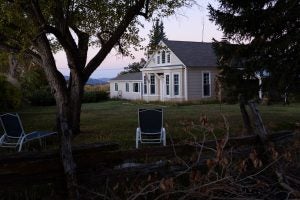
Brown has between 100 and 126 cow-calf pairs, and cattle production is increasingly under pressure within mainstream media outlets. Many consumers question if it’s possible to stay both profitable in the short-term while preparing for future resilience, such as protecting against larger and more destructive forest fires — are ranchers fighting a losing battle?
For Brown, meat production and environmental stewardship can work in concert for mutual benefits. And often, this comes at no cost to ranchers.

“It’s helpful to try and understand things historically, whether it’s land or music,” Brown says.
Opera Lafayette centers on bringing new interpretations to musical masterpieces of the past, recently revitalizing an 18th-century French comic opera called The Blacksmith and performing it outdoors at the ranch. Similarly, Brown looks to understand forest health through the context of the past.
“Why those lumbermen cut everything and hardly left any old-grow trees back around 1900 still has me scratching my head. In retrospect, it just seems greedy and short-sighted, and not sustainable,” Brown says.
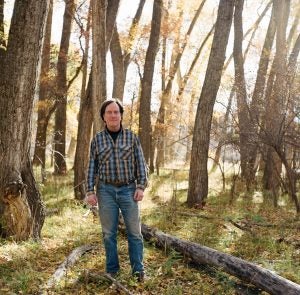
Brown works year after year to gradually boost the forest health on his ranch’s grazing land.
Since the 1980s, his family has contracted a friend to help with careful forest thinning — taking out some of the small and mid-sized trees, leaving old growth, and aiming to reduce what’s called the basal area (the average amount of an area occupied by tree stems) to a healthy density. This ensures the trees get enough water, sun, and healthy soil to thrive while also reducing their susceptibility to disease and burn.
Beginning in 2020, Brown kicked off a larger forest thinning operation. The project was funded by a grant administered by the U.S. Department of Agriculture’s Natural Resources Conservation Service, but it was secured by the Mancos Conservation District. Working together with the conservation group, he’s able to continue work to protect his grazing land while ensuring this important habitat is healthy and minimizing its risk of wildfire.
Hopefully, Brown says, he’ll be continuing this work for decades to come.
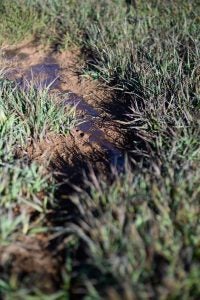
“There’s no question, there was overgrazing years ago when this was open country … but you can’t do that to your own place when you use the same land year after year,” Brown says. “There’s a certain amount of soil health work that ranchers have been doing for a long time.”
Brown knows that well-managed forest grazing, while reducing fuel loads that increase the severity of potential wildfires, can help to allow more diverse plant species on the forest ground. This biodiversity — in addition to cattle’s hooves breaking up the soil and naturally spreading manure — builds the soil organic matter.
More soil organic matter means the land can hold more water. In other words, the rains don’t run through the pastures and strip the land of soil and nutrients. Water moves more slowly through the upper forest grazing pasture and the lower pastures, eventually returning back into the Mancos River — with less erosion and disruption to riparian areas.
On Brown’s family ranch, forest health directly connects to soil and river health downstream.
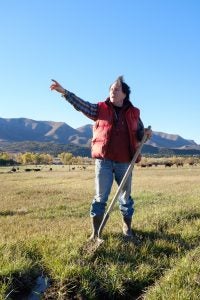
“The irrigation on our ranch is a good example of return flow to the river slowing down and extending the time it takes for the movement of water through the valley,” Brown says.
Water rights in the valley date back to the 1880s, when older ranches applied and received their rights starting at number one. When the river runs low, priorities are turned off from higher numbers to lower numbers, so the lower-numbered priorities last longer.
Both branches of the Mancos River run through Brown’s property and then converge just below it. This translates to a highly efficient ditching system, including four wetlands at the bottom of the ranch. As his property has number-one water rights in the area, Brown knows that his soil health impacts his neighbors downstream — even those he doesn’t directly border.
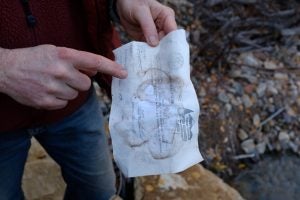
“Normally, we’ll have this diversion open until the middle of June, at least. But in 2021, it closed six weeks beforehand, so we had that much less water,” says Brown.
Ranchers such as Brown in the Mancos Valley are flexible and resilient. When there’s less water to divert to the ditches, they must find ways to use water more efficiently to irrigate their pastures — there’s no one-size-fits-all option, and timing may not work in their favor.
After seeing channels deepen over the years, it was becoming harder for Brown to dam up his diversions and control the flow to his ditches each year. He knew he could use some help.
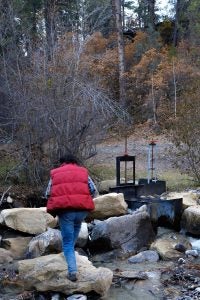
Brown worked with his local conservation district to update irrigation infrastructure, particularly diversion structures, throughout the ranch to ensure the water available is used as efficiently as possible.
As part of a community-wide project, he’s now able to more easily access the water to irrigate his pastures.
These improvements resulted from the development of the Mancos Watershed Plan in 2011, which pulled in $6 million along with Natural Resource Conservation Service cost-share dollars to improve many of the 49 diversion structures along the Mancos, among other irrigation and ditch work.
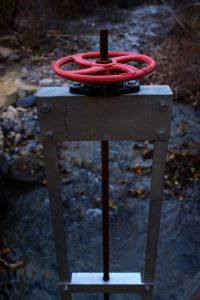
The new structures improve efficiency by handling high water well while also being able to divert with low flows — in addition to simply being more durable and easier to use.
The diversions also maintain a gradual slope so that fish can still go upstream to reach spawning grounds, all while helping to prevent erosion and the spread of noxious weeds — a win for both the rancher and the conservation district’s larger goals.
And most importantly, it comes at no cost to the ranch.
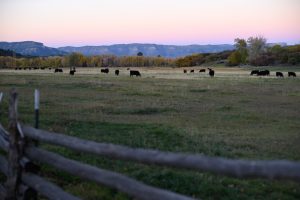
For many, bridging the gap between producers and conservation groups will be a critical tool in building resilience in the West — finding these small yet powerful win-win solutions.
“I see this ranch as part of a larger system in the valley,” Brown says.
He appreciates and respects the sovereignty and perseverance of the ranches and land stewards that have been in the Mancos Valley for many years, while also seeing the need to increase conservation efforts.
“Somehow, we all have to figure out what to do with drier land and less water to put on it, and how to both produce and conserve,” Brown says. “I like to find that radical middle ground.”
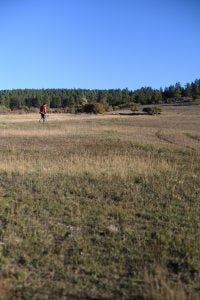
Across the West, conservation districts like that in Mancos often do the legwork of finding and applying for grant funding on ranchers’ behalf. The projects are also supported by NGOs like the River Network, which provides technical assistance and facilitates a peer learning network to support local leaders. Many ranchers such as Brown recommend exploring the options to access capital simply by reaching out and starting a conversation with your local district.
Emily Payne is a Denver-based food and agriculture writer. She is the longtime editor of Food Tank, which highlights success stories in agriculture, and works with the nonprofit Mad Agriculture. In Colorado, ranchers can learn more about how to get involved in their local stream management plan, or SMP, to request financial assistance or get involved with farm restoration projects by visiting www.ColoradoSMP.org.



